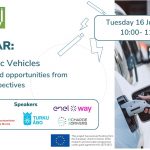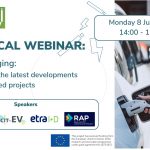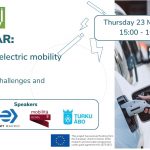Electric urban buses in the spotlight of USER-CHI activities
USER-CHI project is dedicated to boost a massive deployment of electric mobility in Europe through innovative and user-friendly charging solutions tested in 7 European cities. The project covers solutions for electric cars and light electric vehicles, but as the partners saw during our cycle of study visits for the project, the electrification of public transport plays a big role in our journey towards decarbonisation, and it has implications on the demand for charging infrastructure, the grid capacity, urban planning and the way we think our mobility behaviour. What lessons can we learn from pioneer cities on the issue?
Navigating EU policies on buses decarbonisation
Thomas Lymes from Eurocities provided a comprehensive summary of policy updates and regulatory instruments affecting the electrification of buses in European cities, both on a demand and a supply side.
Three main legislative instruments to drive the buses’ segment decarbonisation:
National targets for the procurement of zero-emissions buses ranging from 24% to 45% for the first reference period 2021-2025; 33% to 65% for the second reference period 2025-2027.
- Regulation on CO2 emissions standards for heavy duty vehicles (incl urban and inter urban buses)
Under this revised regulation, fleet-wide CO2 emissions targets might apply to the new sales of buses in the EU market. Discussions are still ongoing on the phase-out date for the sales of internal combustion engine (ICE) buses.
AFIR does not have specific targets for electric buses but targets laid out for ‘urban nodes’ on heavy-duty vehicles are relevant also for recharging of urban buses. The regulation defines technical specification for e-buses recharging infrastructure and encourage Member States to consider public transport in their national deployment strategies.
As public authorities are expected to lead by example, there are of course various EU funding instruments at their disposal to help them procure zero-emissions buses and invest in the proper recharging infrastructure e.g the Recovery and Resilience Facility and Alternative Fuels Infrastructure Facility.
Lessons from European cities
The webinar hosted three speakers each presenting the case of urban buses electrification from the USER-CHI cities of Berlin, Budapest and Turku. These three cities are at different stages on their path towards electrification.
Turku, a pionneer
Föli is the public transport company operating for the city of Turku and neighbouring regions. Following the example of the city, the public company has a climate neutrality target for 2029 and is making great efforts to achieve it: the first electric buses were introduced in 2016 and as of 2022, 1/3 of the bus fleet is fully electric. The procurement rules that allow the authority to effectively decarbonise their fleet. Föli introduced a rule in the tendering process to give extra points to operators able to provide electric vehicles. This strategy proved successful and will continue to be implemented in the long run.
Föli has experienced overall positive reactions to its electrification efforts. The passengers compliment the increased smoothness of the trip and lower noise pollution coming with the introduction of electric buses. The company also managed to avoid backlash from the bus drivers who are often worried about the changes in operation due to electrification of their vehicles. Föli’s training of bus drivers received positive feedback and turned out to help decrease energy consumption since the drivers who received the training drove the vehicles more energy efficiently.
However, some challenges remain for Föli, such as a lack of supply of certain types of vehicles among European manufacturers and the impossibility of retrofitting their existing vehicles for alternative fuels.
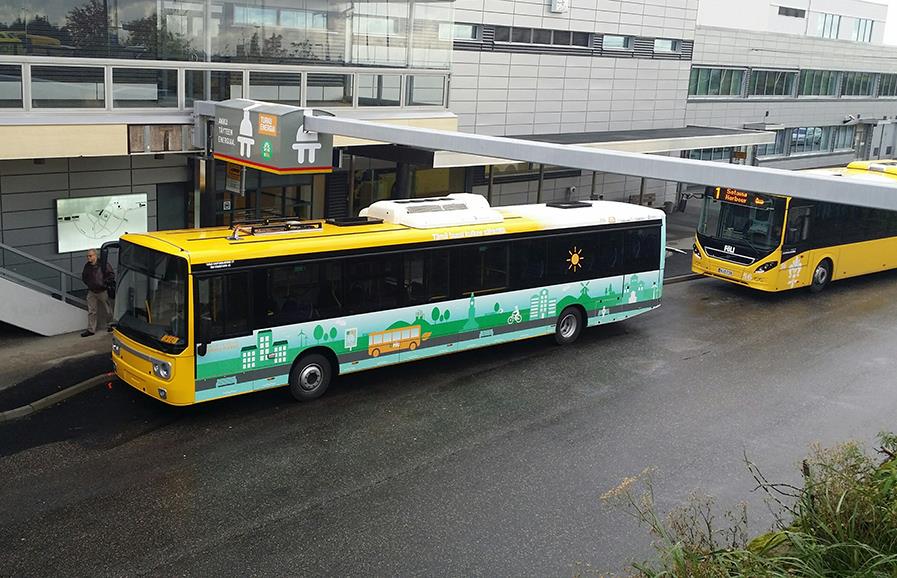
Source illustrations: Electric buses in Turku, Föli
Berlin, on the right path
We then moved to the German’s capital. Berlin’s electrification efforts are guided by the Berlin Mobility Act from 2018. This piece of legislation gives guidance for different modes of transportation such as walking, cycling, and public transport. It is stated in the Act that public transport in Berlin should be decarbonised by 2030, and the Berlin public transport authority is acting with this aim in mind.
Berlin chose electrification as their decarbonisation strategy after comparing the cost-effectiveness of different types of alternative fuels. After conducting many studies comparing different options, Berlin opted for a “Flex charging strategy” – battery electric buses charged at depots and bus terminal stations, combined with opportunity charging for buses with long routes.
The economic viability of Berlin’s selected strategy, the process of decision making involving modelling and external consultations are some of the best practices participants could hear from Berlin. Among the current challenges faced by the city, the loss of service area on depots due to the presence of charging infrastructure, or the need to carry out the transition works while keeping full operation of the bus services are the major ones.

Source illustration: Electric buses in Berlin, www.berlin.de
Budapest, exploring opportunities
Budapest is finding itself at the beginning of its electrification journey. Budapest is one of the cities taking part in the EU Mission on 100 Climate Neutral and Smart Cities and is committed to reaching climate neutrality by 2030. This commitment is at the centre of the Hungarian capital’s decarbonisation efforts, implemented by BKK, the public transport company.
After creating a broad electrification strategy, Budapest decided to go forward with the system of trolleybuses and battery electric buses with chargers at depots and terminal stations. There are of course operational challenges connected with the transition to electric buses, for example, the need to adjust the bus operation and drivers’ shifts to the charging needs of vehicles, or the battery weight affecting the maximum passenger volumes per vehicle. Budapest is looking at the optimisation of charging infrastructure and in-motion charging to make the electrification efforts more economically viable. Starting with in-motion charging also gives Budapest a little more time to see the progress in battery technologies and invest later in solutions with better technical features.
At the moment, BKK is looking at the possible funding schemes for their efforts, such as EU’s Recovery and Resilience and Cohesion Funds. Alternative financing schemes are also being considered in Budapest, such as procuring the operation of electric buses as a service instead of buying the vehicles themselves.
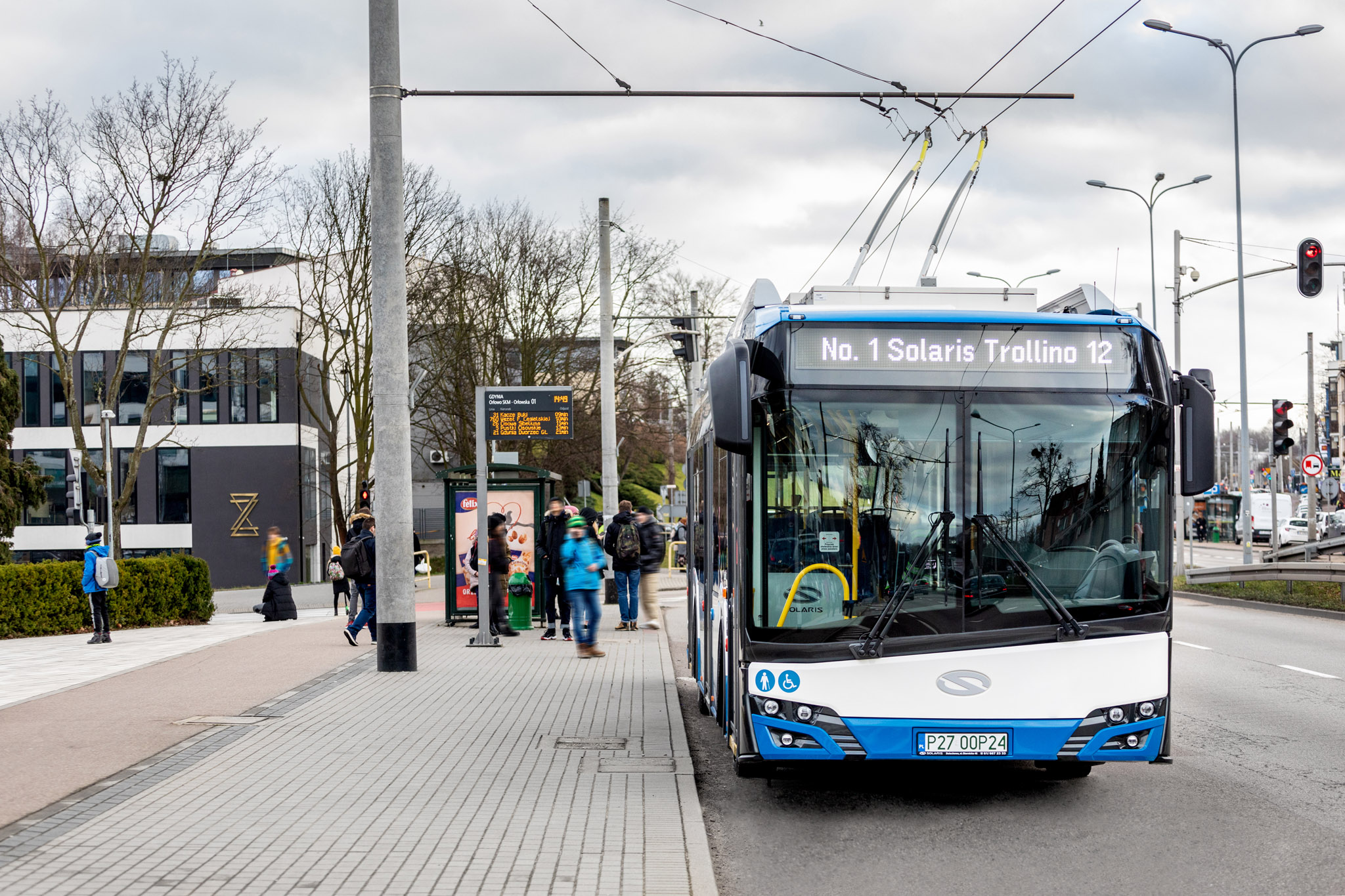
Source illustration: Solaris buses and trolleybuses have been present in Hungary since 2002.
© Solaris Bus & Coach sp. z o.o.

